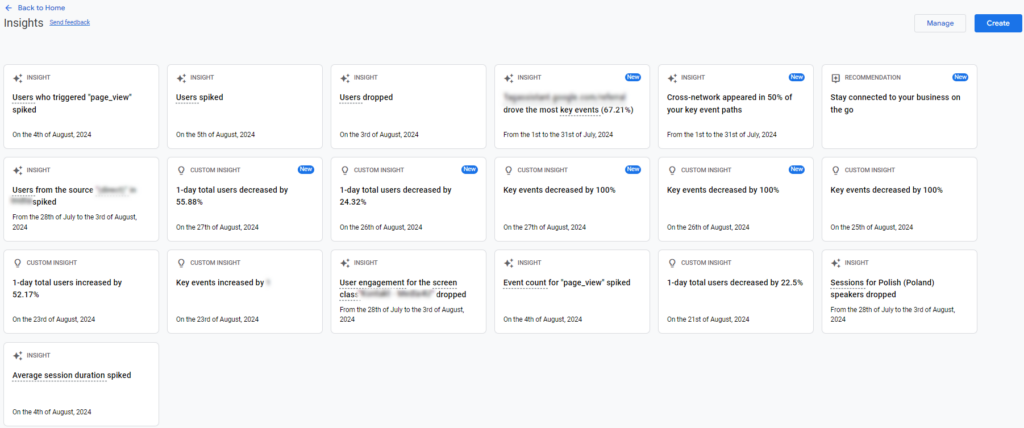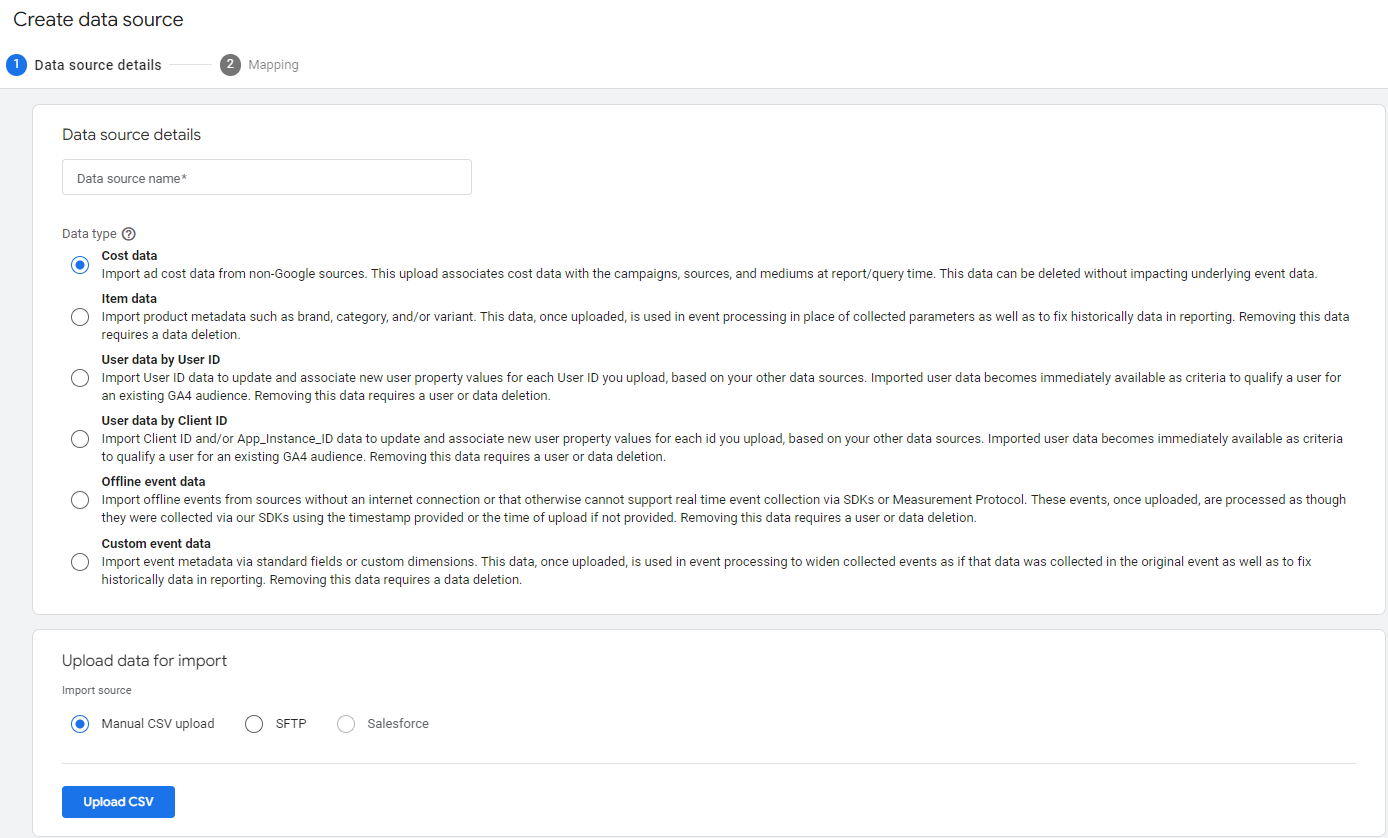

Google Analytics 4 is one of the primary tools used in web analytics. Its predecessor, Universal Analytics, was discontinued on July 1, 2024. The new version collects data from websites and apps, relying on events rather than traditional sessions. Additionally, GA4 is continuously being developed and refined, providing new user capabilities.
5 new features in GA4
The features available from June 26, 2024, focus on improving visibility and making data management more effortless. Here they are:
- AI-generated insights: This feature uses machine learning to automatically detect unusual changes or emerging trends in the data and notify the user. It allows the creation of custom insights that monitor changes important to the user, displaying them in various locations within GA4. It also enables email notifications, allowing users to respond to significant changes and better manage their data quickly.

In the upper right corner, you’ll find the “Manage” and “Create” buttons.
Manage: Here, you can set conditions under which GA4 will send email notifications.
Create: This option allows you to add a custom Insights tile.
- Import third-party ad data: Users can directly import ad data from platforms like Pinterest, Reddit, and Snap. Data from non-Google campaigns will be automatically included in cross-channel performance reports and assigned to appropriate traffic source dimensions in Analytics, with metrics like “ad cost,” “ad clicks,” and “ad impressions.” Enhancements to cost data import make it easier to monitor and analyze campaigns conducted outside the Google environment within a single GA4 report.
Read: How data analysis can drive the growth of your e-commerce?

- Cross-channel reporting and budgeting: This feature allows tracking of online ad spending and projected performance against specific goals, such as revenue, across all marketing channels.
- Chrome Privacy Sandbox support gives internet users greater control over their privacy. It allows them to manage online activity tracking and adjust settings at any time. It replaces traditional cookies, protecting privacy while enabling the display of personalized ads.
- Campaign Manager 360: Campaign Manager 360 (formerly Campaign Manager) is an updated version of the tool for managing advertising campaigns. As part of Google Marketing Platform, it offers centralized solutions for managing, reporting, and verifying the effectiveness of ads. Although the interface has been refreshed, the functions remain unchanged, and further enhancements are planned.
How to implement new features?
Some new features will be implemented automatically, requiring no additional action, while others will require extra steps. AI-generated insights and Chrome Privacy Sandbox support will be introduced automatically. Campaign Manager 360 also requires minimal effort; you only need to connect your Campaign Manager 360 account to the Google Analytics 4 panel. The other two options will require more involvement.
To implement the cross-channel budgeting feature in Google Analytics 4, you need to import ad campaign data and define advertising goals and budgets. Data import can be done in several ways:
- By configuring it within the GA4 interface,
- By pulling data from external tools or using the API;
- By uploading data from files.
Import third-party ad data: The method depends on the platform sending data to GA4. As with Google Ads, integration may be simple or require an additional tool, such as Google Tag Manager. With Google Tag Manager, you can add a tracking code to your website, enabling you to also add event codes and parameters. Once the process is complete, all data will be available in GA4 reports.
Discover our proprietary solution: Fact Matter by Power BI – extract actionable insights from your data.
Summary
Google Analytics 4 introduces a range of new features that focus on areas such as data analysis, ad campaign management, and user privacy protection. These updates include automated trend detection and notifications, integration with external advertising platforms like Pinterest and Reddit, and more advanced cross-channel reporting. Some of these features are implemented automatically, while others require additional configuration to fully leverage their potential.


